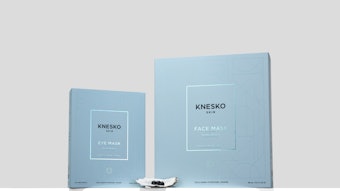The latest research from Euromonitor International shows that, in 2006, the cosmetics and toiletries industry posted a growth rate of more than 5% over 2005, its overall highest since 2001. The industry continues to benefit from a combination of strong macroeconomic trends (including a worldwide rise in consumer spending power); key demographic factors such as aging populations and higher life expectancies; an increased interest in appearance and personal care as a means of preventive healthcare; and lifestyle and climatic changes that are creating opportunities for new product niches. Legislative restrictions, too, are having a positive impact by improving consumer confidence and facilitating international trade, and technological advances are improving product efficacy and providing manufacturers with new marketing tools and advertising opportunities.
Emerging Markets Show Strongest Growth
With growth rates of 13%, Eastern Europe and Latin America were the fastest movers from a regional perspective, alongside key markets in Asia-Pacific, with expansion linked to large populations, rising disposable incomes, modernizing retail and distribution networks, and increased consumer awareness. With regard to the mature markets of Western Europe and North America, fortunes appear to be on the up after a lackluster 2005, due, in part, to the continuation of economic recovery in the large markets of the U.S., Germany and France. Western Europe takes the lion’s share of global C&T sales, although its importance has contracted over the years. The region now accounts for just less than 30% of the world market, with sales up 3% on the previous year. North America’s performance is closely linked to that of the U.S., where 2006 sales were in excess of $50 billion—a first.
Eastern Europe to Become a Two-tier Market
Russia was the largest cosmetics and toiletries market in Eastern Europe in 2006, with sales of $8.5 billion, representing approximately 42% of regional value. The trend toward more premium products is a particular feature of the Russian market. As growth threatened to slow across most cosmetics and toiletries products, the premium segment offered the greatest opportunities. Growth of 13% in Romania is also notable, and came about largely as a consequence of the country’s improved economic fortunes, resulting from regulatory reforms necessary for its accession to the European Union (EU). Heavy brand advertising by multinationals also drove up sales, although discounting in the core hygiene sectors, such as bath and shower products and oral hygiene, proved a drag on growth.
Eastern Europe is expected, in the long term, to become a two-tier market, a division forming between the EU accession nations and Commonwealth of Independent States (CIS) countries. EU members will experience rapid development, with the trends evident in Western Europe spreading eastward. Demand for premium products and value-added brands may even exceed economic growth in these markets as consumers look to leave the hardships of the recent past behind and embrace Western lifestyles. It is largely the younger demographics that are driving value growth, as these consumers are more willing to sacrifice thriftiness for fashion.
The CIS countries (an alliance of former Soviet Republics), excluding Russia, are set to see less dramatic rises in economic fortunes, and remain more insulated from international fashion and beauty trends. The opportunities are strong in Eastern Europe, but there are some threats and challenges that manufacturers need to be aware of—including the abundance of counterfeit and copycat brands, and economic and political instability. Growing energy prices, too, could undermine the cost advantages of local production, as could rises in living standards, which would inevitably increase labor costs.
Brazilian Boom Continues
Brazil continued to drive growth in Latin America in 2006 with sales of $18.2 billion, an increase of 13% on the previous year. The good performance is due, in part, to prices remaining stable, rising below inflation rates. An appreciated real compared to the U.S. dollar kept the cost of imported raw materials in check and brought stability to prices of premium imported products, underpinning a price-led increase in demand. The ever-growing youth segment, the increasing number of women in the labor force and an increased life expectancy for Brazilians provided the foundation of the vibrant Brazilian cosmetics and toiletries industry on the demand side. On the supply side, dynamic product segmentation allied with extremely efficient direct sales distribution (with the direct sales channel accounting for 30% of market value) contributed to growth.
Latin America, as a whole, is expected to experience rapid development over the forecast period, with new products expected to emerge that satisfy diverse demands such as convenience and efficacy. Latin American consumers have a different concept of beauty from that held in Western Europe and North America. While Asia-Pacific and Eastern Europe are, to varying extents, influenced by Western fashion and beauty trends, Latin American consumers have their own ideals. For this reason, it is a prime target for ethnic cosmetics and toiletries, with repackaged international brands being less likely to appeal to consumers in this region. Price is a major determinant of success in Latin America, where, for many consumers, the purchase of hygiene essentials is a financial stretch. The split between premium and mass products is remarkable, with 99% of products across all sectors categorized as mass.
Local players—including Natura Cosmeticos, the only regional player in the top five companies in Latin America—provide high-quality products at competitive prices, so trading up is not a strong trend in this region. However, there is some movement to go upmarket with premium or value-added brands. The expected growth in private label cosmetics and toiletries, the result of a more developed distribution network and price consciousness in consumers, is a threat to future dynamism. There also remains a continuing risk of economic and political instability in many of the region’s major markets, most notably Colombia and Venezuela.
To continue reading this article, please click here. You will be redirected to GCI magazine's Web site.
Emerging Markets Show Strongest Growth
With growth rates of 13%, Eastern Europe and Latin America were the fastest movers from a regional perspective, alongside key markets in Asia-Pacific, with expansion linked to large populations, rising disposable incomes, modernizing retail and distribution networks, and increased consumer awareness. With regard to the mature markets of Western Europe and North America, fortunes appear to be on the up after a lackluster 2005, due, in part, to the continuation of economic recovery in the large markets of the U.S., Germany and France. Western Europe takes the lion’s share of global C&T sales, although its importance has contracted over the years. The region now accounts for just less than 30% of the world market, with sales up 3% on the previous year. North America’s performance is closely linked to that of the U.S., where 2006 sales were in excess of $50 billion—a first.
Eastern Europe to Become a Two-tier Market
Russia was the largest cosmetics and toiletries market in Eastern Europe in 2006, with sales of $8.5 billion, representing approximately 42% of regional value. The trend toward more premium products is a particular feature of the Russian market. As growth threatened to slow across most cosmetics and toiletries products, the premium segment offered the greatest opportunities. Growth of 13% in Romania is also notable, and came about largely as a consequence of the country’s improved economic fortunes, resulting from regulatory reforms necessary for its accession to the European Union (EU). Heavy brand advertising by multinationals also drove up sales, although discounting in the core hygiene sectors, such as bath and shower products and oral hygiene, proved a drag on growth.
Eastern Europe is expected, in the long term, to become a two-tier market, a division forming between the EU accession nations and Commonwealth of Independent States (CIS) countries. EU members will experience rapid development, with the trends evident in Western Europe spreading eastward. Demand for premium products and value-added brands may even exceed economic growth in these markets as consumers look to leave the hardships of the recent past behind and embrace Western lifestyles. It is largely the younger demographics that are driving value growth, as these consumers are more willing to sacrifice thriftiness for fashion.
The CIS countries (an alliance of former Soviet Republics), excluding Russia, are set to see less dramatic rises in economic fortunes, and remain more insulated from international fashion and beauty trends. The opportunities are strong in Eastern Europe, but there are some threats and challenges that manufacturers need to be aware of—including the abundance of counterfeit and copycat brands, and economic and political instability. Growing energy prices, too, could undermine the cost advantages of local production, as could rises in living standards, which would inevitably increase labor costs.
Brazilian Boom Continues
Brazil continued to drive growth in Latin America in 2006 with sales of $18.2 billion, an increase of 13% on the previous year. The good performance is due, in part, to prices remaining stable, rising below inflation rates. An appreciated real compared to the U.S. dollar kept the cost of imported raw materials in check and brought stability to prices of premium imported products, underpinning a price-led increase in demand. The ever-growing youth segment, the increasing number of women in the labor force and an increased life expectancy for Brazilians provided the foundation of the vibrant Brazilian cosmetics and toiletries industry on the demand side. On the supply side, dynamic product segmentation allied with extremely efficient direct sales distribution (with the direct sales channel accounting for 30% of market value) contributed to growth.
Latin America, as a whole, is expected to experience rapid development over the forecast period, with new products expected to emerge that satisfy diverse demands such as convenience and efficacy. Latin American consumers have a different concept of beauty from that held in Western Europe and North America. While Asia-Pacific and Eastern Europe are, to varying extents, influenced by Western fashion and beauty trends, Latin American consumers have their own ideals. For this reason, it is a prime target for ethnic cosmetics and toiletries, with repackaged international brands being less likely to appeal to consumers in this region. Price is a major determinant of success in Latin America, where, for many consumers, the purchase of hygiene essentials is a financial stretch. The split between premium and mass products is remarkable, with 99% of products across all sectors categorized as mass.
Local players—including Natura Cosmeticos, the only regional player in the top five companies in Latin America—provide high-quality products at competitive prices, so trading up is not a strong trend in this region. However, there is some movement to go upmarket with premium or value-added brands. The expected growth in private label cosmetics and toiletries, the result of a more developed distribution network and price consciousness in consumers, is a threat to future dynamism. There also remains a continuing risk of economic and political instability in many of the region’s major markets, most notably Colombia and Venezuela.
To continue reading this article, please click here. You will be redirected to GCI magazine's Web site.










